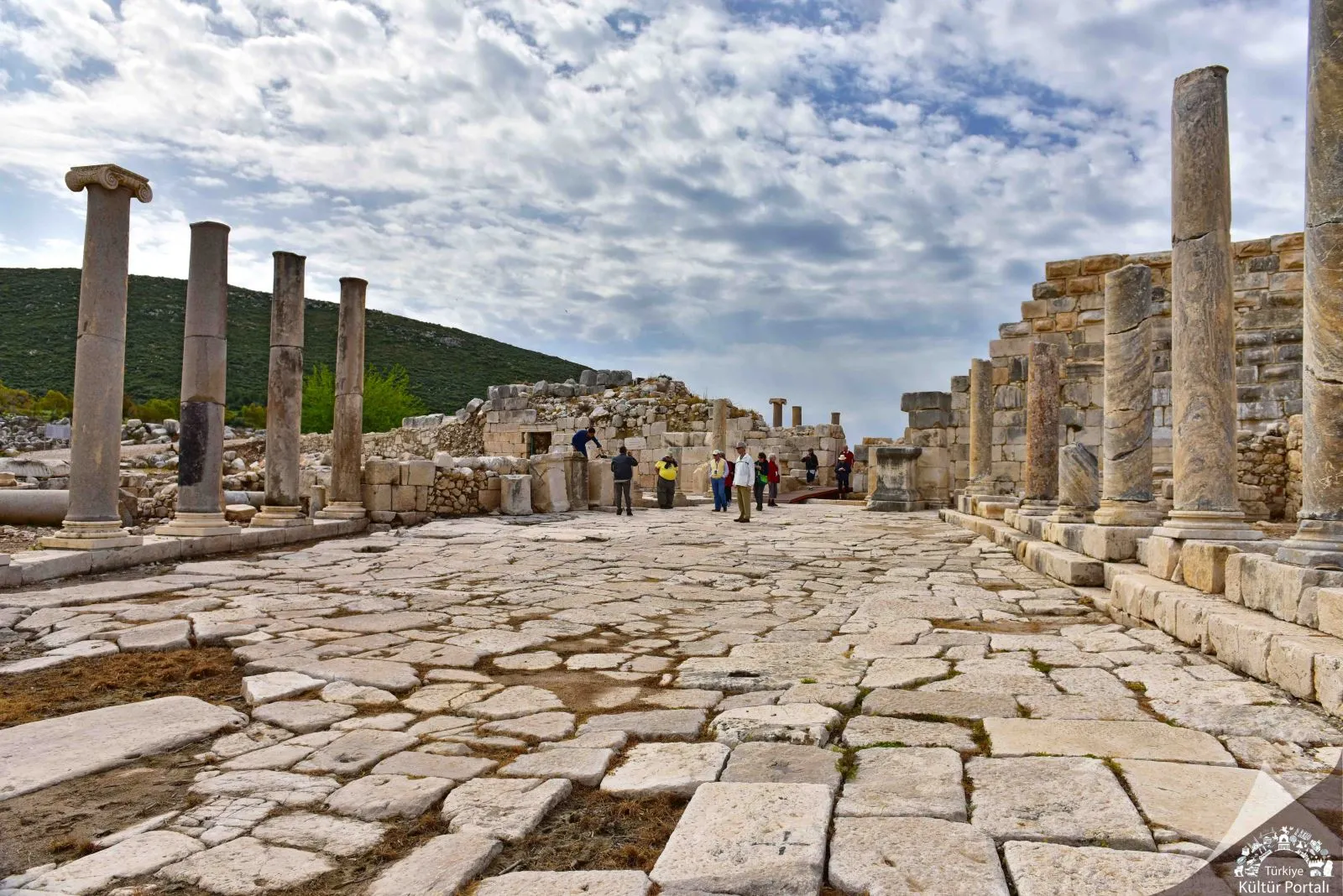Patara Ancient City
Description
Located at the southwestern end of the Xanthos Valley between Fethiye and Kalkan, in today's Gelemiş Village, the ancient city of Patara is one of the most important and oldest cities of Lycia. Excavated since 1988, Patara Ancient City has a special importance not only for its archaeological and historical values, but also for being one of the rare beaches where Caretta-Caretta, the Mediterranean turtles, lay their eggs and breed for millions of years.
History of Patara Ancient City
In Hittite texts from the 13th century BC, the name of the city is mentioned as Patar. While the ceramic sherds found in the Acropolis of Tepecik contain Middle Bronze Age features, the stone axe belonging to the pre-Iron Age, which was unearthed on the skirts of the eastern slope of Tepecik, shows how far back the history of Patara goes. Patara, which has continued to be an important city throughout history as it is the only place in the Xanthos Valley that can open to the sea, is called Patara in Lycian language in inscriptions and coins.
Patara became the leading city of Lycia when it came under Ptolemaic rule in the 3rd century BC. When the Seleucid Kingdom began to control Lycia at the beginning of the 2nd century BC, Patara was recognized as the capital of Lycia. This was formalized in 167/168 BC when Patara gained autonomy from Rome and independence from Rhodos, and Patara became the capital of the Lycian League. Monumental structures such as the Assembly Building and the Theater built in the capital during the Hellenistic Period are parallel to this historical process. Patara, which did not lose its importance after the Roman rule, maintained its importance as a naval base where Rome established its connection with the eastern provinces, as well as a center where Roman Governorates carried out their judicial affairs. While Lycia became a Roman province in 43 AD, Lycia and Pamphylia were united as a single province in 74 AD and Patara continued to be the capital.
Famous as an important oracle center of Apollo, Patara was also a port where grains transported from Anatolia to Rome were stored and kept. The city, which maintained its importance during the Byzantine Period, became an important center for Christians. St. Nicholaos, known as "Santa Claus", was from Patara. In addition, St. Paul boarded a ship from Patara to go to Rome. The fact that Bishop Eudemos, the only signatory of Lycia at the Council of Nicaea presided by Emperor Constantine in 325 AD, was the Bishop of Patara is proof that the city was also popular during this period. Patara, which maintained its importance throughout the Middle Ages, has survived to the present day as an important center with the arrival of the Turks. Today, the entrance to the ruins of the city is through the magnificent and well-preserved Roman Triumphal Arch. It is understood from the inscriptions that it was built around 100 AD on behalf of the regional governor. On the slopes of the hill to the west of the arch is a cemetery with Lycian sarcophagi. It is understood from the inscriptions that the theater leaning against the Kurşunlu Hill at the southernmost end of the city was rebuilt in 147 AD after the earthquake.
Kurşunlu Hill, where the theater is located, is the most beautiful corner where the general view of the city can be seen. The other ruins of the city; Vespasian Bath, Corinthian Temple, main street, harbor and granary can be easily seen from here. The granary (granarium) located behind the marsh to the northwest of the hill is one of the monumental buildings of Patara and was built by Emperor Hadrian and his wife Sabina in the 2nd century AD. To the north of the theater is the Assembly Hall, where Patara, the capital of the Lycian League, hosted meetings. The water of the city was brought from the rock on the Kızıltepe slope near the village of İslamlar, about 20 kilometers northeast of the city. Between the spring and the city, north of the Fırnaz pier; the section called "Delik Kemer" in the neighborhood is the most monumental part of the waterways.
Short Description
Located at the southwestern end of the Xanthos Valley between Fethiye and Kalkan, in today's Gelemiş Village, the ancient city of Patara is one of the most important and oldest cities of Lycia. Excavated since 1988, Patara Ancient City has a special importance not only for its archaeological and historical values, but also for being one of the rare beaches where Caretta-Caretta, the Mediterranean turtles, lay their eggs and breed for millions of years.
History of Patara Ancient City
In Hittite texts from the 13th century BC, the name of the city is mentioned as Patar. While the ceramic sherds found in the Acropolis of Tepecik contain Middle Bronze Age features, the stone axe belonging to the pre-Iron Age, which was unearthed on the skirts of the eastern slope of Tepecik, shows how far back the history of Patara goes. Patara, which has continued to be an important city throughout history as it is the only place in the Xanthos Valley that can open to the sea, is called Patara in Lycian language in inscriptions and coins.






